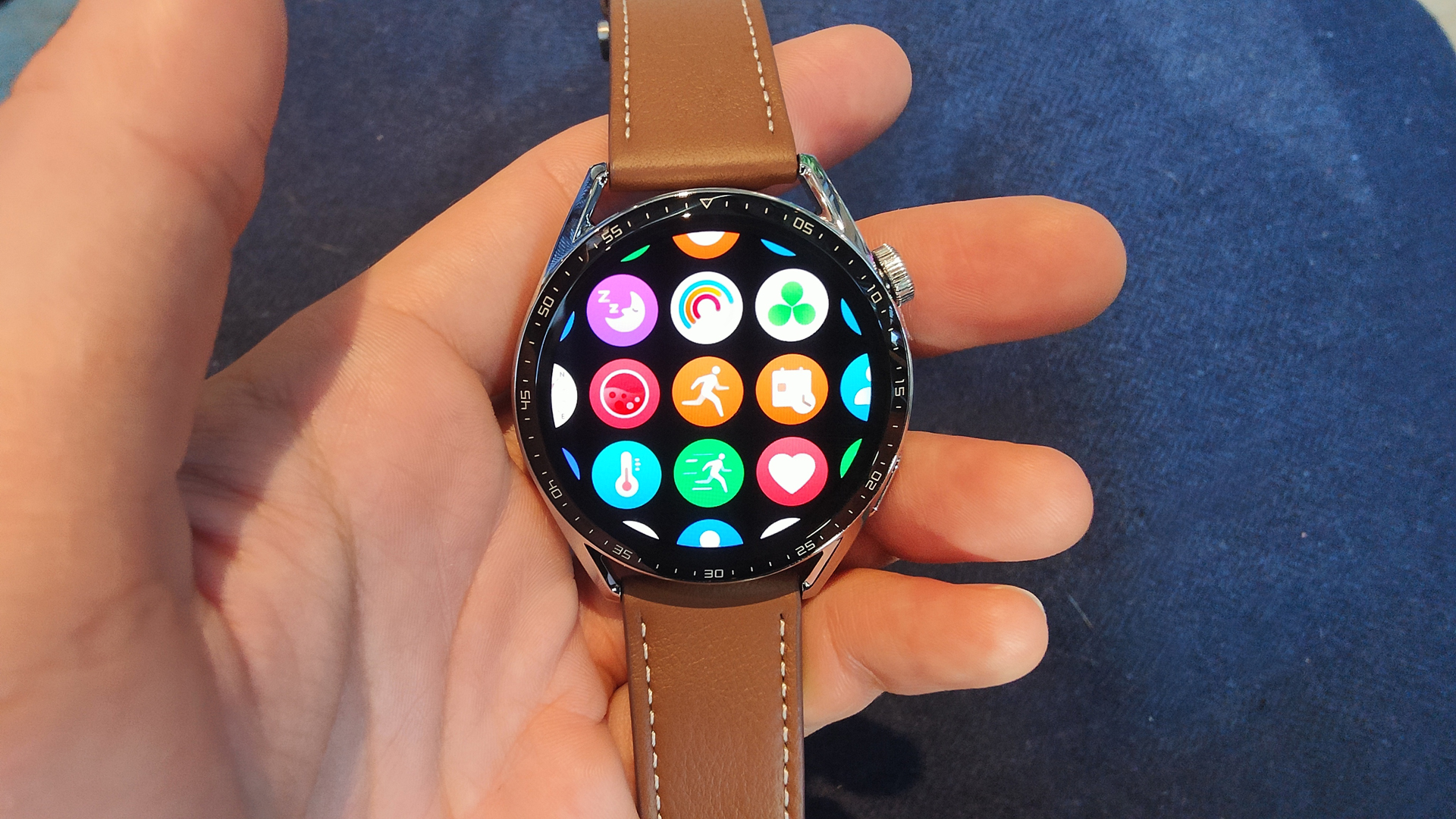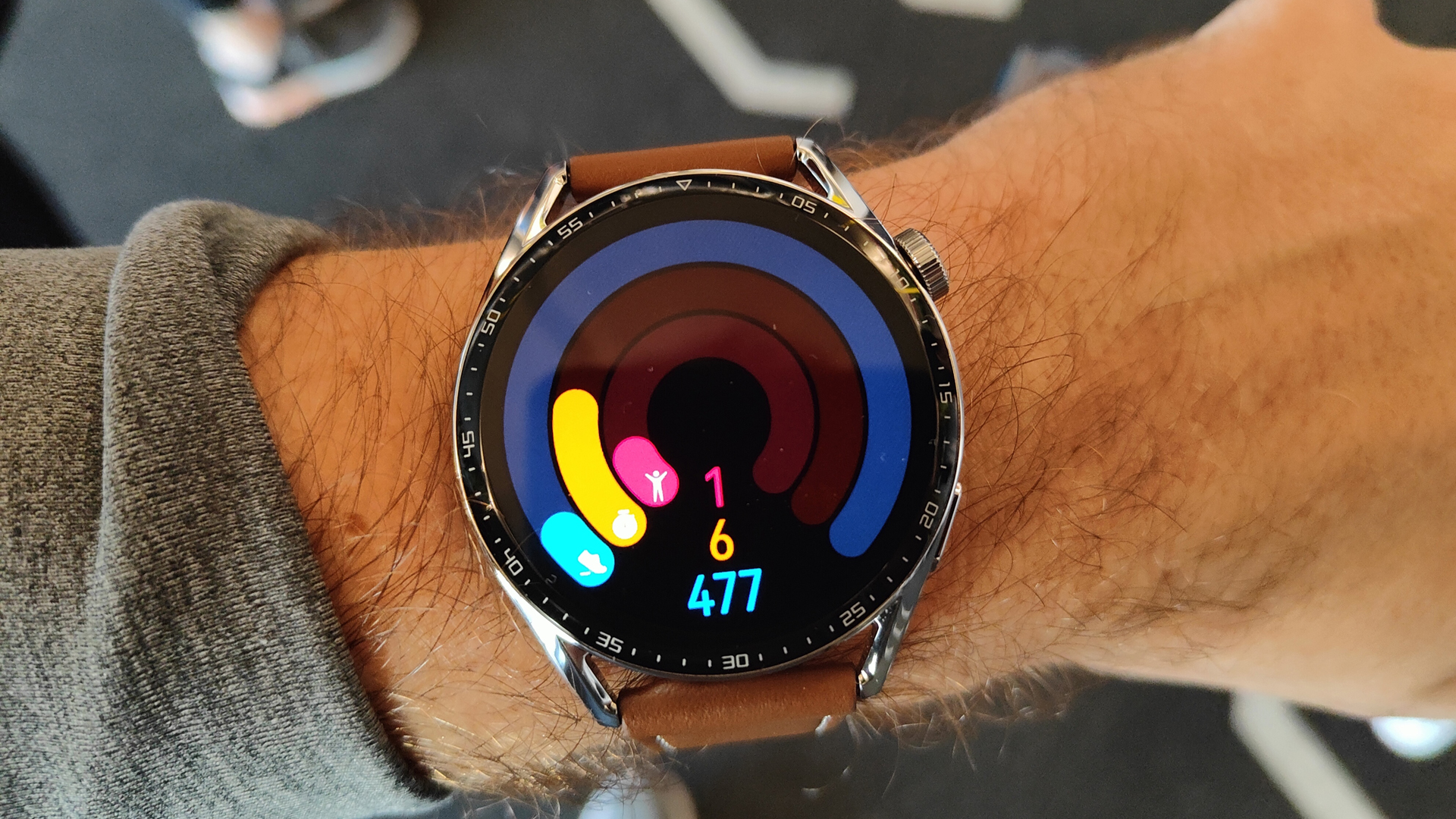I trained with Mo Farah AND tried out the new Huawei GT 3 fitness watch. Here's what I learned…
Training with Mo Farah: T3 talks to the running legend about training and recovery

When it comes to running legends, they don't come much bigger than Sir Mo Farah. He's won no fewer than 10 World and Olympic gold medals, he's got a knighthood, and he's in the ads for Oral B's ultra-posh new electric toothbrush range – well, he does have one of the world's most famous smiles. How much more winning can one man do? Well, it turns out he's also a brand ambassador for Huawei who just launched its latest fitness-centred smartwatch, Watch GT 3. To celebrate, it invited a select handful of Britain's top fitness journalists to train with Sir Mo. And yes, that did include me. And yes, of course I jumped at the chance!
As one of the world’s most prominent long-distance runners and successful British athletes in modern history, Farah is perhaps a little over qualified to demonstrate a running watch. I’m not complaining, though: the partnership means I was able to talk to the running legend during a demo session that Huawei held for the new watch ahead of launch.
Watch firmly on wrist and desperate to uncover some of the secrets behind his record-breaking performances, I powered through a run session coached by Farah himself. I fired off questions in between my gasps for breath in an attempt to garner any nuggets of advice for aspiring runners.
- The best running watches we've tested to date
- My favourite ab workout is the goblet squat: here's why
- Fit over 40: fitness experts recommend exercise, diet and recovery tips for Millennials
Mo Farah's top running tips

“What practical tips do you have for those just starting out?” I asked, feet pounding the treadmill belt.
Sir Mo: “It’s about being able to understand what you need to do for you and how far you need to go to hit your goals. It’s important to give yourself a challenge - maybe sign up for a race that’s six or eight weeks down the line and when it comes to it, just see where you are.”
He adds that in the lead up to a goal you’ve set yourself, or race you’ve entered into, it’s essential that you build your training steadily.
Sir Mo: “Take it slowly and don’t rush into it. If you’ve set a 20 mile goal for your first week, for example, then aim for 22 or 23 for the second week, and slowly increase. The more you can increase and the more sessions you can do, the closer you’ll get to your goal.
Get all the latest news, reviews, deals and buying guides on gorgeous tech, home and active products from the T3 experts
“If you want to build a nice house, you need a solid foundation. You can’t have these crazy ideas of starting training beyond what’s possible. It’s important to have the understanding of what you’re capable of and work from there.”

Farah admits that for him, even with all the years of experience he has under his belt, the same rules apply.
Sir Mo: “The same goes for myself. Three months ago I was injured and where I was at - I’m still not there yet. I’ve lost quite a lot of training.
“I’ve had to go back to basics: build my training back up, get comfortable. Once I’m comfortable, I’ll build up the miles and eventually do sessions that are aimed at increasing speed in the lead up to race day.
“If it’s muscle tightness you have, it’s best to stop, ice it, and take care without pushing it too hard. Listen to your body… although that's actually one of the hardest things to do.”
What it’s like to train with a running legend?

So what’s it like training with one of the world’s greatest athletes? I won’t lie: it's pretty daunting. He demands attention and owns a room. Plus, knowing he’s one of the world’s greatest athletes does make you feel a little self conscious, especially as he watches you clumsily trot and pant on a treadmill while interviewing him.
It became immediately clear how seriously Farah takes his profession and why he’s a world-class athlete. To achieve what he has, it is undeniably the result of years of dedicated training and nutrition, which is evident just from looking at him.
An interesting comment he made that got me pondering was in reference to the Huawei smartwatch he had strapped to his wrist:
“Imagine if I’d had access to the information a watch like this can give you,” he pondered. “Would it have made a difference [to my training]? I guess we’ll never really know…”
Farah was able to achieve some tremendous things without the insights a modern smartwatch can give you. With data that can predict recovery and offer valuable advice into your health, the Huawei GT 3 makes me wonder what smart wearables will be able to offer athletes in the future.
Hands-on with Huawei Watch GT 3

Of course, the run session with Farah was also an opportunity to put Huawei's latest smartwatch, Watch GT 3, through its paces.
I tested the 46mm, leather-strap version in my sprint session with Farah, which is a great option for those that like a big watch face and a generally more stylish look. This model sports a 1.43-inch round panel display with a pretty impressive 466x466 resolution, which ensures you can see all the data presented to you clearly, even when running at speed. Those who prefer something a little more dainty can opt for the 42mm model, which boasts a smaller 1.32-inch screen.
In the short time I had with it, I found the Watch GT 3 to be exceptionally comfortable and easy to use, probably thanks to its sleek, slim construction and the addition of a rotating crown, which adds easy navigation.
The design won’t blow you away, admittedly. It looks similar to pretty much every other Android smartwatch on the market right now. What I liked about the Huawei Watch 3 GT is that it’s not just an activity tracker; it focuses on the more holistic side of fitness, especially when it comes to recovery. For example, it will track what you eat and drink as well as how well you sleep, advising you on how much recovery you need to ensure you don’t overdo it and can stick to your goals over time.
Huawei Watch GT 3: price and availability








Due for release on 10 November with a starting price of £209.99 (about $250 or AU$350), the Watch GT 3 is Huawei’s latest attempt to capture the interest of health and fitness enthusiasts.
To stand out in a very saturated market, it offers up to 14 days of battery life – pretty stonking – and an AI-powered personal running coach. Although you’ll have to wait for a full review to find out what we really make of it…

Lee Bell is a freelance journalist and copywriter specialising in all things technology, be it smart home innovation, fit-tech and grooming gadgets. From national newspapers to specialist-interest titles, Lee has written for some of the world’s most respected publications during his 15 years as a tech writer. Nowadays, he lives in Manchester, where - if he's not bashing at a keyboard - you'll probably find him doing yoga, building something out of wood or digging in the garden.
